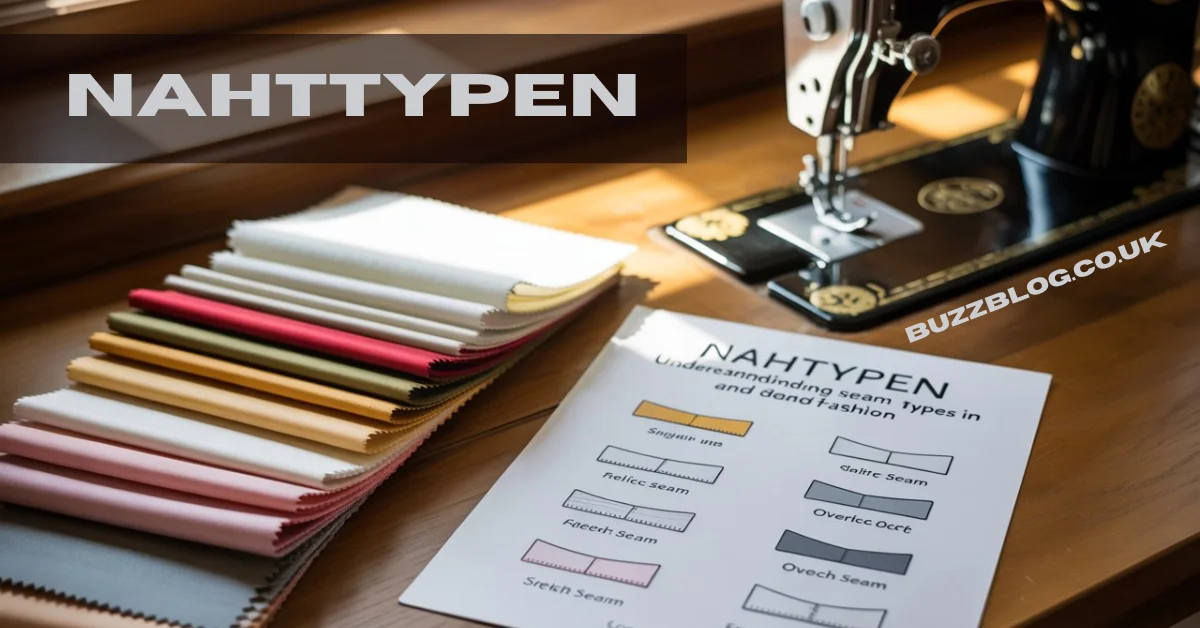Introduction to Seam Types (Nahttypen)
Ever wondered why your store-bought clothes last longer than your homemade ones? The secret often lies in the type of seam used. Seams are the backbone of garment construction—they hold everything together, literally! Understanding seam types (or Nahttypen in German) isn’t just for pros; whether you’re sewing by hand, working on your first project, or designing fashion lines, this guide will be your best friend.
What Are Seam Types?
A seam is where two or more layers of fabric are stitched together. But it’s not just a line of thread—it’s a design element, a structural necessity, and sometimes even a style statement.
Importance of Seams in Sewing and Tailoring
Why does seam selection matter? Simple:
- It affects durability
- It influences appearance
- It determines comfort
- It changes the way a garment fits and feels
Whether you’re crafting haute couture or hemming curtains, seam knowledge = power.
Basic Seam Types Explained
Plain Seam (Geradstichnaht)
This is the bread and butter of seams. It’s the one you likely learned first—just sew two pieces of fabric right sides together and press the seam open.
Best Use Cases
Perfect for woven fabrics and general clothing items.
Pros and Cons
✅ Easy to do
❌ Not very strong without reinforcement
French Seam (Französische Naht)
A favorite for delicate fabrics, this seam hides raw edges inside a double seam.
How It’s Made
Sew wrong sides together first, trim, flip, then sew right sides. Voila—no frays.
Why It’s Popular in Fine Fabrics
Looks clean, lasts long, and gives a luxurious finish on the inside.
Flat-Felled Seam (Kappnaht)
This one’s a heavy-duty hero, commonly seen in jeans and workwear.
Use in Jeans and Sportswear
Built for strength and endurance, flat-felled seams resist stress and look great too.
Durability Factors
All raw edges are enclosed—bye-bye fraying!
Double-Stitched Seam (Doppelt genähte Naht)
Two rows of straight stitches = added strength. Ideal for items under tension like bags and outerwear.
Bound Seam (Einfassnaht)
Adds a professional, tailored look by binding raw edges with bias tape. Think jackets, suits, and unlined garments.
Decorative Seam Types
Functional Nahttypen and stylish, this one adds definition and reinforcement.
Piped Seam (Paspelnaht)
Want to add some drama or contrast? Insert piping into your seams for an elevated look.
Welt Seam (Wulstnaht)
A more complex version of a plain seam with a bold raised finish. Great for coats and formalwear.
Functional Seam Types
Overlocked Seam (Overlocknaht)
Your serger’s best friend. This seam trims and finishes in one step, perfect for knitwear and stretchy garments.
Lapped Seam (Überlappte Naht)
One fabric overlaps another, then stitched down—no raw edges. Common in leather and non-fraying fabrics.
Slot Seam (Schlitznaht)
Two fabric edges are turned under and stitched to an underlay fabric. Looks like a subtle decorative slit.
Specialty Seams for Stretch and Performance Fabrics
Flatlock Seam
Ideal for sportswear and activewear—minimal bulk, lots of stretch.
Zigzag Seam
A must for stretch fabrics. Allows the seam to move without popping threads.
Seam Tape and Bonded Seams
Used in outdoor and waterproof gear. These eliminate stitching altogether by heat-sealing the seam.
Choosing the Right Seam Type
Fabric Type Consideration
- Silks and sheers → French seams
- Denim → Flat-felled
- Knit → Overlock or zigzag
Garment Purpose
- Daily wear needs durability
- Formal wear needs finesse
Seam Strength vs. Appearance
Sometimes looks matter more; sometimes strength wins. Choose based on what’s more important for your project.
Seam Finishing Techniques
Pinked Edges
Cut edges with pinking shears to reduce fraying—quick and easy.
Serging
For a pro finish, serge those edges. It’s fast, clean, and secure.
Bias Binding
Want style inside and out? Use bias tape to bind edges for a couture-level finish.
Industrial vs. Home Sewing Seams
Seam Types Used in Factories
Industries favor overlock, flatlock, and chain stitching for speed and efficiency.
How Home Sewers Can Imitate Pro Results
Get a serger, press your seams, and don’t skimp on thread quality!
Common Mistakes to Avoid with Seams
Using the Wrong Seam Type
Ever tried a plain seam on a knit? Disaster! Always match seam type to fabric.
Not Finishing Edges Properly
Unfinished seams = fraying = your garment falling apart. Don’t skip this step!
Tips for Perfect Seams Every Time
Using the Right Needle and Thread
Match your tools to your fabric. Denim? Use a denim needle. Silk? Use silk thread.
Pressing Seams for Professional Finish
Sew, press, repeat. A hot iron is your secret weapon for crisp, clean seams.
Conclusion
Seams Nahttypen might seem like a small detail, but they literally hold your project together—from structure to style. Knowing your seam types, when to use them, and how to finish them properly can elevate your sewing game from beginner to pro. Whether you’re making a flowing silk blouse or rugged denim jeans, the right seam type ensures your garment looks great and stands the test of time.
So next time you’re choosing a seam, don’t just default to the plain one. Think about the fabric, the function, and the finish. Get creative Nahttypen with decorative seams, go practical with functional ones, and never forget to press!
Mastering seam types is like learning chords in music—once you know the basics, you can compose masterpieces.

